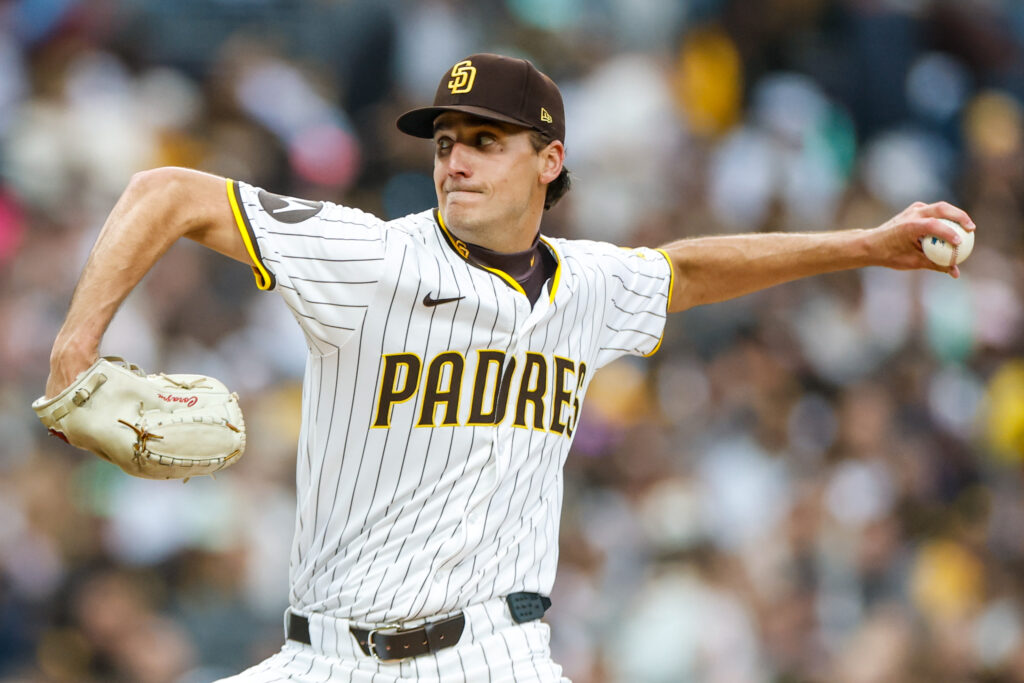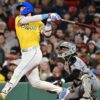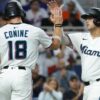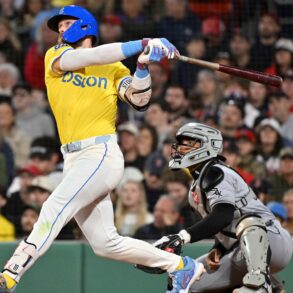
Over the coming days, MLBTR will look at next offseason’s option class. Steve Adams will highlight the players who can opt out of their current deals, while we’ll take a division-by-division look at those whose contracts contain either team or mutual options. Virtually all of the mutual options will be bought out by one side. Generally, if the team is willing to retain the player at the option price, the player will decline his end in search of a better free agent deal.
Arizona Diamondbacks
Arizona signed the veteran righty, who missed all of last season after undergoing shoulder surgery in January 2024. Graveman was hobbled by back discomfort this spring and began the year on the 15-day injured list. He has thrown a few bullpen sessions but has yet to begin a rehab assignment. During his most recent healthy season, Graveman worked to a 3.12 ERA across 66 1/3 innings between the White Sox and Astros.
Grichuk posted big numbers in a short-side platoon role for the Snakes in 2024. Arizona brought him back on a $5MM free agent deal. He’s making only a $2MM salary and will collect a $3MM buyout on his option at the end of the season. Grichuk hasn’t gotten much playing time, starting six of Arizona’s 19 games (all but one as the designated hitter). He’s out to a decent start, batting .240 with five doubles over 28 plate appearances.
Colorado Rockies
Farmer has been a rare bright spot in what has been a terrible Colorado lineup. The veteran utilityman has started 15 of their 18 games. He’s playing mostly second base and is hitting .345 with nine doubles, the second-most in MLB. Farmer isn’t going to keep hitting at this pace, but it’s an excellent start for a player who signed for $3.25MM after a down year (.214/.293/.353) with Minnesota.
Kinley signed a three-year extension during the 2022-23 offseason. The slider specialist had a brilliant first half to the ’22 campaign, but that was cut short in July by elbow surgery. Kinley hasn’t been the same pitcher since returning. He allowed more than six earned runs per nine in both 2022 and ’23. He has given up five runs (four earned) with seven strikeouts and six walks across 7 2/3 innings this season. Kinley owns a 6.03 ERA while walking more than 11% of opposing hitters over 88 frames since signing the extension.
The option comes with a $5MM base value. It would escalate by $500K apiece if Kinley finishes 20, 25, and 30 games — potentially up to $6.5MM. He has finished two contests in the early going. While the option isn’t especially costly, this is trending towards a buyout.
Stallings produced the best offensive numbers of his career for the Rox in 2024. He returned on a $2.5MM deal early in the offseason. Stallings has been more of the 1-b catcher behind Hunter Goodman. He has started seven games and caught 59 innings. It’s been a slow start, as he’s batting .125 with 12 strikeouts in 27 trips to the plate.
Note: Thairo Estrada’s one-year deal contains a ’26 mutual option, but he’s excluded from this exercise because he would remain eligible for arbitration if the option is declined.
Los Angeles Dodgers
This could end up being a borderline call. The Dodgers can keep Muncy around for what’d be his ninth season in L.A. on a $10MM price tag. That’s not an exorbitant sum for baseball’s highest-spending team. Muncy has generally been an excellent hitter in the middle of Dave Roberts’ lineup. He’s a career .230/.355/.482 hitter in Dodger blue. He remained as productive when he was healthy last season, posting a .232/.358/.494 slash over 73 games. An oblique strain cost him three months.
Muncy is out to a much slower start this year. He has yet to connect on a home run in 18 games. He’s batting .193 with 25 strikeouts in 68 plate appearances (a 36.8% rate). It’s very early, of course, but he’ll need to pick things up. Muncy turns 35 in August. NPB third baseman Munetaka Murakami will be posted for MLB teams next offseason. The Dodgers will very likely be involved on the 25-year-old slugger, so it’s possible they’d prefer to keep the position open early in the winter.
Taylor is in the final season of his four-year, $60MM free agent deal. He was coming off an All-Star season in 2021, when he hit .254/.344/.438 with 20 homers. His offense has trended down over the course of the contract, especially sharply over the past two years. Taylor fanned at a near-31% clip last season, batting .202/.298/.300 in 246 plate appearances. He has only been in the starting lineup three times this season.
The Dodgers have kept Taylor throughout his offensive struggles. They clearly place a lot of value on him as a clubhouse presence and appreciate the defensive versatility he provides off the bench. Still, it’s hard to imagine them paying the extra $8MM to exercise the option since he’s essentially the final position player on the roster. The option price would increase by $1MM if Taylor is traded or in the unlikely event that he reaches 525 plate appearances and/or makes the All-Star Game.
Note: Alex Vesia’s arbitration contract contains a ’26 club option, but he’s excluded from this exercise because he would remain eligible for arbitration if the option is declined.
San Diego Padres
Díaz finished last season in San Diego after being released by the Rockies. He re-signed on a $3.5MM deal as the Padres went with the affordable veteran catching tandem of Díaz and Martín Maldonado. He’s hitting .206 in 13 games, though he has taken seven walks against eight strikeouts.
- Kyle Hart, LHP ($5MM club option, $500K buyout)
Hart, a soft-tossing lefty, returned to the majors after an excellent year in Korea. He signed a $1.5MM guarantee with a ’26 team option that has a $5MM base salary. The option price could climb as high as $7.5MM. It would jump $250K if Hart reaches 18 starts this year, $500K at 22 starts, $750K at 26 starts, and $1MM if he starts 30 games.
San Diego has given Hart a season-opening rotation spot. He has allowed seven runs over his first 11 2/3 innings. Hart has walked five with eight strikeouts and a below-average 8.3% swinging strike percentage.
King’s option is purely an accounting measure. He agreed to push $3.75MM of this year’s $7.75MM guarantee back to the end of the season in the form of a buyout — potentially buying the Padres a bit of flexibility for in-season trade acquisitions. Barring a major injury, he’s going to decline his end of the option and will be one of the top pitchers in next year’s class.
Wade agreed to a $1MM club option as part of a deal to avoid a hearing in his final year of arbitration. He was squeezed off the roster during Spring Training. Wade cleared waivers, accepted an assignment to Triple-A, then came back up last week. He’s playing center field with Jackson Merrill and Brandon Lockridge on the injured list. The option price is barely above the league minimum, but Wade is on the roster bubble and no guarantee to stick in the majors through the end of the season.
San Francisco Giants
San Francisco added Murphy on a two-year deal during the 2023-24 offseason. The veteran catcher has had a difficult time staying healthy throughout his career, and that’s continued in San Francisco. He played in only 13 games last year because of a knee sprain. He started this season on the shelf with a herniated disc that is going to keep him out for at least the first two months. This looks like a buyout.
This post was originally published on this site be sure to check out more of their content.






